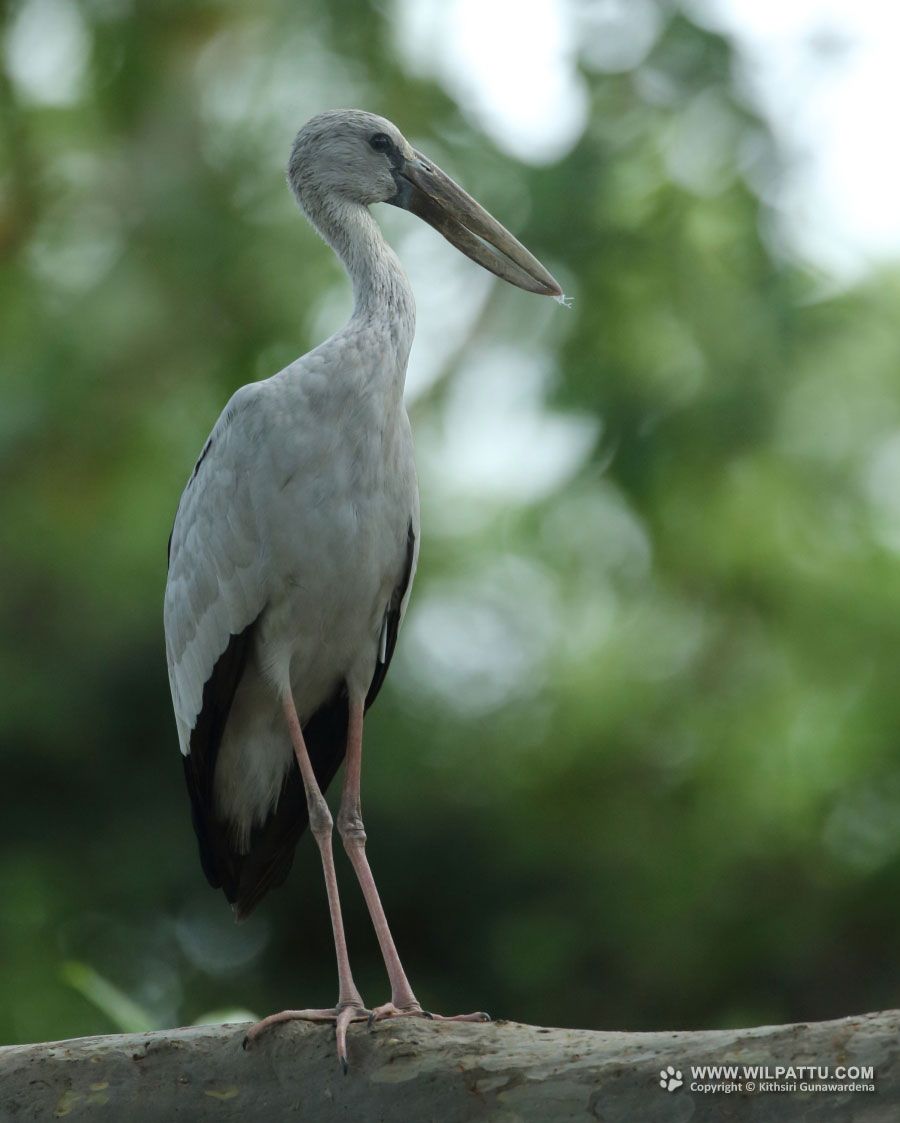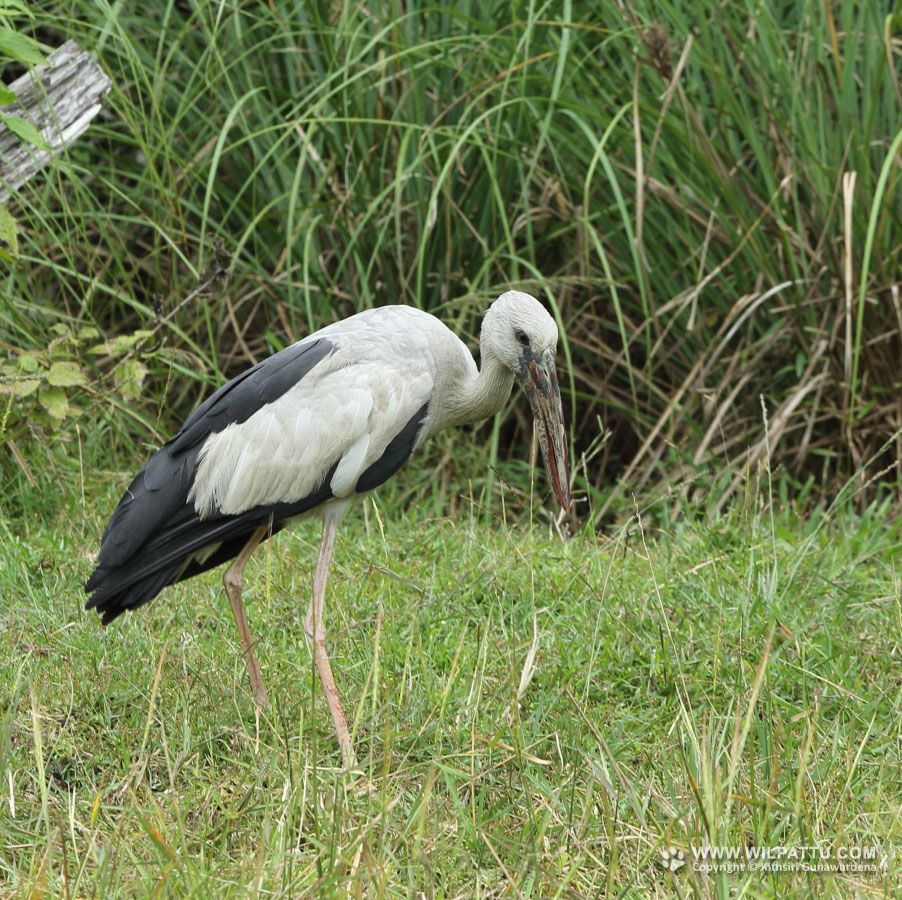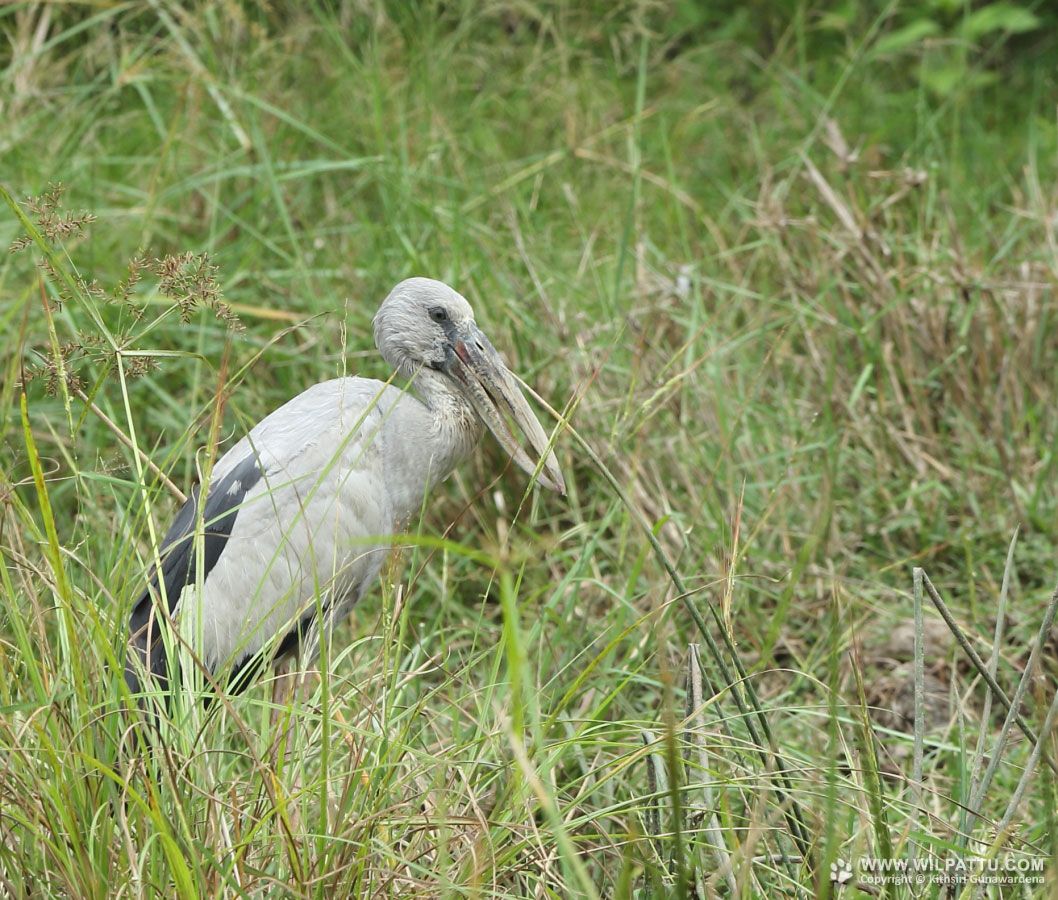
Birds ‹‹ Go Back
This is a common breeding resident of the lowlands and lower hills. It is native to the Indian Subcontinent and South East Asia.
The conservation status of this species is regarded as Least Concerned (National Red List 2012).
Openbill is a species protected under the Fauna and Flora Protection Ordinance as amended by Act No. 22 of 2009.
I have observed this species in wetlands and marshes throughout the low county dry zone. Small populations are quite common in the wet zone and the lower hills. They can be seen at localities such as Kelanivally forest reserve in Kitulgala.
These birds, with their unique tweezer shaped beaks, feed almost exclusively on mollusks and bivalves. The formation of the beak is used with great skill to open the tightly shut shells of these molluscs to get at the tender flesh, which is swallowed by the bird. I believe that the accidental release breeding of the Apple Snails Pomacea diffusa imported by the ornamental fish trade in to most water bodies in the wet zone resulted in the population of these storks to swell in the wet zone.
During the dry season where most dry zone tanks dry up these storks gather in large numbers at the remaining tanks with water. In July 2003 I counted a flock of about 2500 birds at the Minneriya National Park and in August 2009 a flock of more than 5000 birds at Kalawewa.
The mixed breeding colony at Anavilundawa Sanctuary north of Chilaw is one locality where breeding of these birds can be observed from December to March each year.
These birds have now become common in the fields around Colombo and are regularly seen flying over the city. They are a common site at Bellanwila Attidiya, Talangama Wetlands, Muthurajawela, Kotte Marshes and where ever there are paddy fields.
The Openbill is not very common at Wilpattu but they are seen in small numbers at most water bodies.



